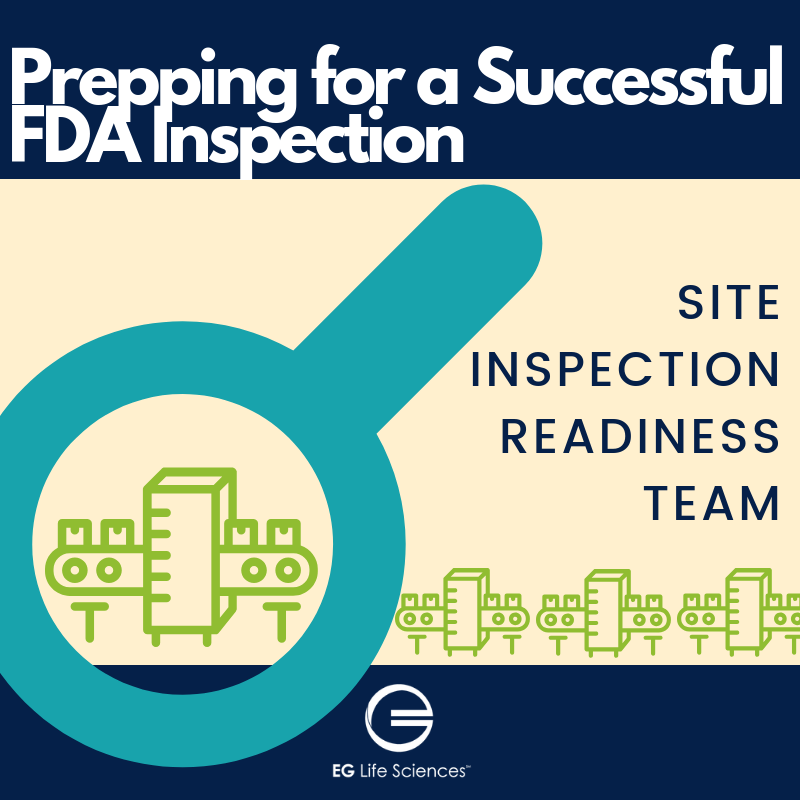For pharmaceutical, medical device, and biotech companies, being always “at the ready” for FDA inspections is an absolute necessity. While some inspections are predetermined, others are surprise visits, so it’s critical to have a team and a process in place to ensure you can respond to every inquiry effectively.
In order to do this, you must have a strong Quality Assurance (QA) team and an effective quality management system (QMS) in place. In an article on PharmaVoice.com, the VP of quality and compliance at Telerx states, “Inspection readiness is having a quality management system that doesn’t need any lead time for an inspection.”
Why You Need a Site Inspection Readiness Team
The process begins with the QA team located on site at the manufacturing facility. This team serves as the gatekeeper and is responsible for the audit team that manages the FDA visit, also known as the Site Inspection Readiness Team. This group should be made up of representatives from the following departments:
- QA
- Regulatory Affairs
- Manufacturing
- Quality Control
- Materials Management
- Scientists and Technical Experts who understand the manufacturing process
Typically, there is a lead on this readiness team that coordinates a schedule, develops the readiness plan, identifies the subject matter experts needed, and also identifies the team that is responsible for managing the actual FDA visit. This group must be ready for inspections at a moment’s notice.
What Do You Need to Have on Hand?
The readiness team should have a file of required documents pulled together at all times, and this file should be reviewed at regular intervals. The materials must include organizational charts, metrics, and training requirements. The FDA will want to understand how you are managing employee training and make sure that your company has met the appropriate training requirements.
Critical Elements of the Quality Management System
Your QMS system is extremely critical to the QA team and for the company in general. This is the system by which you ensure your company is keeping up with change controls, deviations, CAPAs, and outstanding action items from previous audits. And your inspection readiness team must be highly proficient with the Quality system, regardless of whether this is a paper-based or electronically-based system.
Your team should also have a Quality metrics program in place for all elements of the Quality system. This will enable you to track CAPAs and deviations and determine how long it takes to close these issues from start to finish. The reality is that if you are not tracking these metrics and keeping track of your deviations, there is a much greater likelihood that your company will receive a 483 from the FDA.
Lastly, be sure that you provide training for your staff on how to manage the FDA inspection visit and interactions. During this training, you can address questions such as:
- What am I allowed to answer?
- What am I not allowed to answer?
- When should I defer to my supervisor?
- Where are the inspectors allowed to go within the facility?
By having a Site Inspection Readiness team in place that is always prepared and is reviewing outstanding items on a regular basis, your company will never be caught off guard when the inspectors come calling. Essentially the FDA wants to see that you are utilizing Quality processes and systems to ensure the utmost safety in the manufacturing process, as well as addressing any previous issues.
